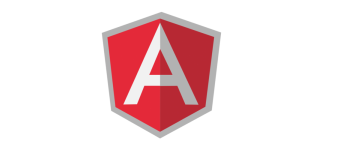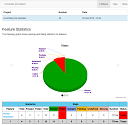
A simple example about navigation inside a web application, using native AngularJS components.
Why ?
Using Templates provides a more reusable View and less duplicate code.
Using Route provide a better decoupling between View and Controller.
Using Redirection inside Controller allows View to not contains compelx logic, but only datas and states.
Using Animation to Enhance User Experience with more transitions.
How to ?
By using AngularJs’ rout, location and animation components.

Template
The template contains ng-view. index.jsp
<html ng-app="myApp">
<head>
<!-- LIBS CSS -->
<link rel="stylesheet" href="webjars/bootstrap/${bootstrap.version}/css/bootstrap.css">
<link rel="stylesheet" href="styles/main.css">
<!-- LIBS JS -->
<script src="webjars/angularjs/${angularjs.version}/angular.js"></script>
<script src="webjars/angularjs/${angularjs.version}/angular-route.js"></script>
<script src="webjars/angularjs/${angularjs.version}/angular-animate.js"></script>
<!-- YOUR JS -->
<script src="js/app.js"></script>
<script src="js/controllers/homeCtrl.js"></script>
<script src="js/controllers/testRouteCtrl.js"></script>
<script src="js/controllers/testParamsCtrl.js"></script>
</head>
<body>
<div class="container">
<!-- MAIN CONTENT AND INJECTED VIEWS -->
<div id="main">
<!-- angular templating -->
<!-- this is where content will be injected -->
<div ng-view class="view-animate"></div>
</div>
</div>
</body>
</html>
home.html
<h1>Home</h1>
<div>
<button class="btn btn-default" ng-click="goToTestRoute()">
Test Route <span class="glyphicon glyphicon-chevron-right"></span>
</button>
</div>
<div class="btn-group-vertical" role="group">
<button class="btn btn-default" ng-click="goToTestParams(1)">
Test Params 1 <span class="glyphicon glyphicon-chevron-right"></span>
</button>
<button class="btn btn-default" ng-click="goToTestParams(2)">
Test Params 2 <span class="glyphicon glyphicon-chevron-right"></span>
</button>
<button class="btn btn-default" ng-click="goToTestParams(3)">
Test Params 3 <span class="glyphicon glyphicon-chevron-right"></span>
</button>
</div>
Router
App file contains the main router for app’s paths, providding a View/Controller assocation for each route. app.js
var myApp = angular.module(
'myApp',
[ 'ngAnimate', 'ngRoute']);
myApp.config(function($routeProvider) {
$routeProvider
// route for the home page
.when('/', {
templateUrl : 'views/home.html',
controller : 'homeCtrl'
})
// route for the testRoute page
.when('/testroute', {
templateUrl : 'views/testRoute.html',
controller : 'testRouteCtrl'
})
// route for the testParams page
.when('/testparams/:id', {
templateUrl : 'views/testParams.html',
controller : 'testParamsCtrl'
})
// default redirection
.otherwise({
redirectTo: '/'
});
});
Test Route
Controller contains redirection, triggered by a View click event.
homeCtrl.js
myApp.controller('homeCtrl', function($scope, $location) {
$scope.goToTestRoute = function() {
$location.path( "/testroute" );
}
$scope.goToPageB = function() {
$location.path( "/pageb" );
}
$scope.goToTestParams= function(id) {
$location.path( "/testparams/"+id );
}
});
testRouteCtrl.js
myApp.controller('testRouteCtrl', function($scope, $location) {
$scope.goBack = function() {
$location.path( "/" );
}
});
testRoute.html
<h1>Test Route</h1>
<button class="btn btn-default" ng-click="goBack()">
<span class="glyphicon glyphicon-chevron-left"></span> Home
</button>
Test params
A route can be parameterized, like in API’s path.
testParamsCtrl.js
myApp.controller('testParamsCtrl', function($scope, $route, $routeParams, $location) {
$scope.goBack = function() {
$location.path( "/" );
}
$scope.$route = $route;
$scope.$location = $location;
$scope.$routeParams = $routeParams;
});
testParams.html
<h1>Test Params</h1>
<p>This is page !</p>
<pre>
$location.path() =
$route.current.templateUrl =
$route.current.params =
$route.current.scope.name =
$routeParams =
</pre>
<button class="btn btn-default" ng-click="goBack()">
<span class="glyphicon glyphicon-chevron-left"></span> Home
</button>
Animation
CSS is linked to view-animate AngularJs’ class.
main.css
.view-animate-container {
position:relative;
height:100px!important;
background:white;
border:1px solid black;
height:40px;
overflow:hidden;
}
.view-animate {
padding:10px;
}
.view-animate.ng-enter, .view-animate.ng-leave {
transition:all cubic-bezier(0.250, 0.460, 0.450, 0.940) 1.5s;
display:block;
width:100%;
border-left:1px solid black;
position:absolute;
top:0;
left:0;
right:0;
bottom:0;
padding:10px;
}
.view-animate.ng-enter {
left:100%;
}
.view-animate.ng-enter.ng-enter-active {
left:0;
}
.view-animate.ng-leave.ng-leave-active {
left:-100%;
}
Demo
Deploy on your local Tomcat and test at:
http://localhost:8080/20151015-javaee-angularjs-bootstrap-route-template http://localhost:8080/20151015-javaee-angularjs-bootstrap-route-template
Here is home View (home.html + homeCtr.js) rendered inside the main Template (index.jsp).

Here is animation when Viewchanges (from home Viewto testroute View).


Here is route of Test Route View. The Route is ‘/testroute’.
http://localhost:8080/20151015-javaee-angularjs-bootstrap-route-template/#/testroute http://localhost:8080/20151015-javaee-angularjs-bootstrap-route-template/#/testroute

Here is routeParams for Test Params View.

The Route is ‘/testparams/:id’.
http://localhost:8080/20151015-javaee-angularjs-bootstrap-route-template/#/testparams/1 http://localhost:8080/20151015-javaee-angularjs-bootstrap-route-template/#/testparams/1

http://localhost:8080/20151015-javaee-angularjs-bootstrap-route-template/#/testparams/2 http://localhost:8080/20151015-javaee-angularjs-bootstrap-route-template/#/testparams/2

Conclusion
Never put a raw url in your html for the sake of maintenability. It’s controllers’ job!
Sources
https://github.com/DamienFremont/damienfremont.com-blog-labs/tree/master/20151015-javaee-angularjs-bootstrap-route-template https://github.com/DamienFremont/damienfremont.com-blog-labs/tree/master/20151015-javaee-angularjs-bootstrap-route-template
References
https://docs.angularjs.org/api/ngRoute/service/$route https://docs.angularjs.org/api/ngRoute/service/$route
https://docs.angularjs.org/api/ngRoute/directive/ngView#animations https://docs.angularjs.org/api/ngRoute/directive/ngView#animations
https://docs.angularjs.org/tutorial/step_07 https://docs.angularjs.org/tutorial/step_07
https://docs.angularjs.org/api/ng/directive/ngDisabled https://docs.angularjs.org/api/ng/directive/ngDisabled











